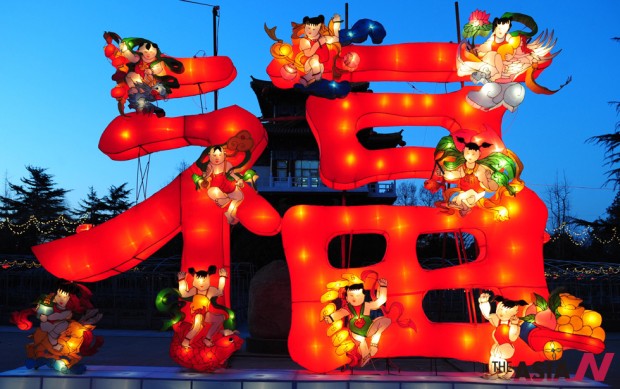Chinese New Year celebrated across Asia
Red lanturns, dragon dance decorate streets
Billions of Asians throughout the world are setting off home for the start of the 2013 Chinese New Year in celebration of the year of the snake. Folk artists prepare to perform a traditional fire dragon dance along the major Chinatown streets as part of the festivities for the lunar new year’s day which falls on Sunday February 10.
This year marks the year of the snake that occupies the 6th position in the Chinese Zodiac and symbolizes traits like intelligence, gracefulness and materialism. In particular, 2013 is the year of the water snake, which is said to be highly motivated, insightful and influential. Snakes are considered to be analytical and effective at getting what they want and seeking the peace they need to thrive in the world.
The new year’s day on the lunar calendar is a widely celebrated Asian holiday. It has been a tradition in China that those living apart from their elderly family return home during the festival period commonly known as the “Spring Festival.” Estimated 1.2 billion Chinese already started rush home from the cities to the smaller villages, which is regarded the world’s largest human migration.
In major South-East Asian cities such as Hanoi, Jakarta, Bangkok, Kuala Lumpur, Singapore, people are preparing customary lantern festivals, firework ceremonies and parades of lion and dragon dancers. Chinese communities across the world will host a variety of events including fireworks.
To South Koreans, the Lunar New Year’s Day called ‘Seollal’ is one of the biggest national holidays of the year. At this festive occasion, people enjoy gathering, dining and drinking with their families. They prepare food for their families and serve ‘Charyae’ which is an ancestral worship ritual.
As the holiday approaches, retail stores in Korea are busy piling up gift sets for those who are visiting their families. Koreans are also readying for the arrival of more than 60,000 Chinese tourists during China’s holidays this weekend. The highlight of the lunar new year event is various cultural events and traditional performances held at downtown Seoul and major cities in Korea.
At the teeming central railway station in downtown Beijing, the world’s largest annual migration is under way, as millions of workers head back to their ancestral towns to celebrate the Chinese New Year. During a week’s holidays from February 9 to 17, cities and villages across China will echo with the sound of fireworks.
In Vietnam, the Lunar New Year is called ‘Tet’. Since the red color is believed as a symbol of luck, red-colored envelops are decorated on the streets. Elders give their children bank notes in red envelopes. Dua Hau(watermelon) is a desired fruit as well due to its red color.
People share a square-shaped traditional food ‘Banh Chung’. Glutinous rice, mung bean, pork are wrapped by phrynium leaves. Vietnamese eat Banh Chung with their family and serve to their ancestors. Like Koreans, Vietnamese have a ancestral worship ritual on New Year’s Day.
Singapore holds an annual street festival, the Chingay Parade. Downtown streets are decorated with red lanterns. The sky begins to be filled with fireworks at night. Residents and visitors are looking forward to one of the biggest parades in Asia in which about 1,000 local dancers and performers will show traditional lion dance and dragon dance. The parade will end with praying messages for the recovery and hope.
Festivities in Malaysia continue for 15 days. Just like other countries, family gathers together and elders give red envelopes with money, ‘Ang Pow,’ to their children. Malaysians share Mandarine, a Chinese orange, which symbolizes luck and wealth.
Japan has not widely celebrated the Lunar New Year since the Meiji restoration in 1872. Japanese have celebrated every holiday according to the Solar calendar.





























































